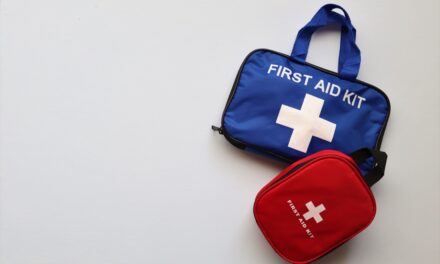Why Survival Gear is Essential
In a world where uncertainty looms around every corner, being prepared is more than a choice; it’s a necessity. The right survival gear can be the thin line between overcoming adversity and succumbing to it. In this comprehensive guide, we will delve into the crucial elements of must-have survival gear, equipping you with the knowledge to be ready for anything.
Whether facing natural disasters, unexpected wilderness scenarios, or just preparing for the unpredictable, the importance of having a well-thought-out survival kit cannot be overstated. Our focus here is to provide you with an engaging and thorough understanding of the essential gear needed for survival, backed by expert insights and the latest in survival research and technology.
This article is designed to resonate with a broad audience, from those new to the concept of survival preparedness to seasoned survivalists looking to refine their gear. We aim to guide you through the key components of survival gear, ensuring that each item you choose is functional, reliable, and versatile. By the end of this guide, you will be well-equipped with the know-how to assemble a survival kit that can stand the test of any challenge, ensuring your safety and well-being in various scenarios.
Detailed Breakdown of Essential Survival Gear
Core Items for Your Survival Kit
An effective survival kit comprises a variety of items, each serving a specific purpose to aid in various survival scenarios. Let’s explore these essentials:
- Water Purification System: Clean water is a critical necessity. Include items like a portable filter, purification tablets, or a compact distillation kit.
- Shelter and Warmth: A lightweight tent, emergency space blanket, or bivy sack are vital for protection against harsh weather conditions.
- Fire Starting Tools: Waterproof matches, ferro rods, or windproof lighters are indispensable for heat and cooking.
Nutrition and Food Preparation
Having a reliable source of nutrition is key to survival:
- Non-Perishable Food: Pack high-calorie, nutrient-dense foods like energy bars, freeze-dried meals, and trail mix.
- Cooking Equipment: A compact camping stove or a multi-fuel cooker, along with lightweight utensils.
Communication and Navigation Tools
Staying oriented and connected are critical in survival situations:
- Navigation Devices: A durable compass and detailed maps of your area, along with a GPS device, if possible.
- Communication Gear: Consider a hand-cranked or solar-powered radio, a satellite phone, or a personal locator beacon for emergencies.
First Aid and Health Management
A comprehensive first aid kit is crucial:
- Medical Supplies: Include bandages, antiseptics, painkillers, and any personal medication.
- Hygiene Products: Basic hygiene supplies like soap, toothbrush, and sanitary products can prevent infections and diseases.
Additional Survival Gear
Other items to consider for your survival kit:
- Multi-Tool: A high-quality multi-tool can serve various purposes, from cutting to repair work.
- Durable Clothing: Weather-appropriate clothing and sturdy footwear are essential.
- Lighting Solutions: Flashlights, headlamps, and additional batteries or a solar charger are indispensable for visibility.
In the next section, we’ll wrap up with a summary of these points and provide key takeaways to ensure you’re well-prepared for any survival scenario.
Summary and Practical Takeaways: Building Your Survival Gear Arsenal
Consolidating Essential Survival Equipment
Our exploration of must-have survival gear equips you with the essentials to face unexpected challenges. Here’s a concise summary of the critical components for a robust survival kit:
- Water and Shelter: Secure reliable water purification methods and compact shelter options to ensure basic survival needs are met.
- Fire and Food: Equip yourself with reliable fire-starting tools and a stash of nutrient-rich, non-perishable food items.
- Navigation and Communication: Include traditional and tech-based navigation tools and emergency communication devices.
- Health and Safety: A well-stocked first aid kit and hygiene supplies are vital for addressing medical needs and maintaining health.
- Tools and Clothing: A versatile multi-tool, durable clothing, and appropriate footwear are essential for various survival tasks.
- Lighting: Ensure adequate lighting with flashlights or headlamps and backup power sources like batteries or solar chargers.
Maximizing Your Survival Preparedness
With the right gear in hand, here’s how to ensure you are fully prepared:
- Regular Inspection and Updating: Periodically review and update your survival gear. Replace or replenish items as needed, keeping abreast of new survival technologies.
- Familiarity and Skill Development: Practice using your survival gear regularly. Familiarity breeds efficiency and confidence in emergency scenarios.
- Adaptability: Customize your survival kit based on the specific environment, weather conditions, and the nature of your outdoor activities or potential emergencies.
- Ongoing Learning: Stay informed about survival techniques and gear developments. Engage with survival experts, online forums, and authoritative resources for continuous learning.
In conclusion, assembling an effective survival kit is a dynamic process requiring careful selection, regular maintenance, and a commitment to skill enhancement. By focusing on the essentials and staying prepared, you can confidently navigate and manage challenging situations, ensuring your safety and resilience in the face of adversity.








